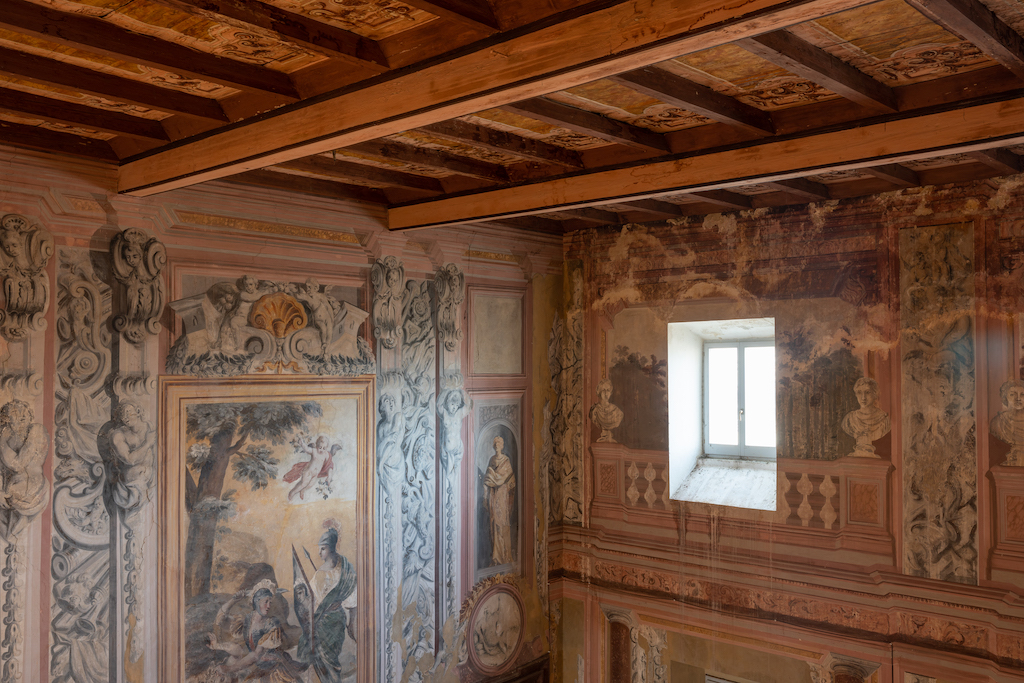Home of the Pinacoteca-Gipsoteca. It was designed for his own family at the end of the 17th century by Luzio Bonomi (Ripatransone, 1669-1739). In 1963-66 it was purchased by Uno Gera, who had it restored and largely restored to its original architecture, despite the transformations and mutilations suffered by the palace (dismantling of the fireplaces, rebuilding of some concrete ceilings...). Other interventions were made in 1994 and 2001 by the municipality with funding from the Marche Region.
The style of the building is sober and chastened; the rear recalls the elevation of the Villa Falconieri in Frascati; the sandstone portal, surmounted by a small balcony, is the main decorative element of the brick facade; the door has a beautiful wooden lunette. Donated to the municipality in 1971 by Gera, since 1976 it has housed the Gipsoteca and the Gera Art Collection, and since 1977 the Pinacoteca Civica, the collection of majolica and porcelain, historical and ethnographic material.
The tour of the Pinacoteca Civica runs from the ground floor where the Hall of Frescoes is located to continue with the Portrait Gallery. The Crivelli Room is dedicated to the Venetian painter of the same name, Vittore Crivelli, to whom we owe, among other things, The Madonna and Child Enthroned. The Coghetti Room, on the other hand, houses a collection of sketches by the painter of the same name, Francesco Coghetti. The Salone delle Feste, the architectural centerpiece of the building, offers visitors an interesting collection of ceramics of various origins (Castelli, Deruta, Casteldurante, Pesaro, etc.). In addition, the Contemporary Art Gallery houses the works of famous artists such as Pericle Fazzini, Remo Brindisi, Mino Maccari, Renato Guttuso, Ernesto Treccani, Antonio Corpora, Umberto Mastroianni, Emilio Greco, Adolfo De Carolis, Giuseppe Canali and others.
The nobleman Alceo Speranza, who dedicated forty years of his life to the promotion of the Ripan poet Luigi Mercantini, made a donation to the Ripatransone community from which sprang the new "Luigi Mercantini" Museum of the Risorgimento. The historical-ethnographic collection contains more than 700 pieces and includes an itinerary that presents evidence from five continents, allowing visitors to embark on a journey of discovery of Mediterranean and non-European traditions.
The Gipsoteca is named after Uno Gera, donor of the building to the City and many pieces of the current picture gallery. The collection consists of interesting study sketches (including a series of childlike attitudes), fascinating bronze objects and other statues.
Also housed within the same building is the Museum of Garibaldian Tradition, a collection of about 100 pieces of memorabilia, photos and documents.
